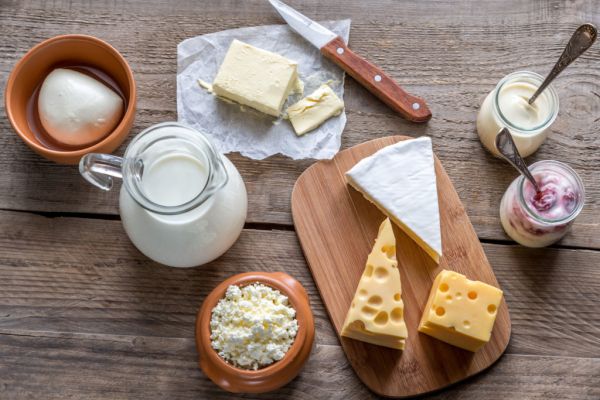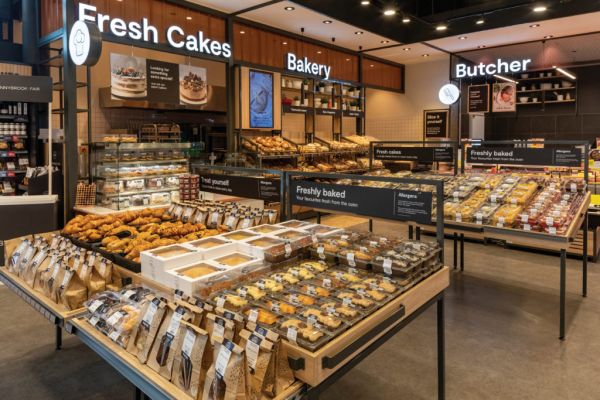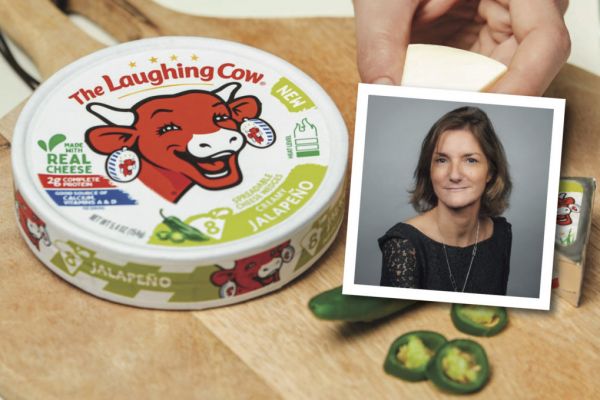The dairy sector was impacted significantly by the coronavirus pandemic, but as consumers increasingly seek out healthier products, the current crisis could offer future growth opportunities. This article is for Premium and Premium Plus subscribers only.
As an 'essential service', the dairy sector has had to overcome countless COVID-related challenges – after all, cows are not going to stop producing milk – but as the year nears its close, the industry can be proud of what it has achieved.
In its latest Food Outlook report, published in June, the United Nations Food and Agriculture Organisation forecast a 4% decline in dairy trade in 2020 to 74 million tonnes, which is set to be the largest contraction in three decades.
In the EU-28, dairy exports are expected to fall by 7.4% this year, mainly due to reduced shipments to Middle Eastern countries, the FAO said.
Urgent Action
But in truth, it could have been so much worse. Back in March, the dairy sector saw values and volumes slide fast, necessitating urgent action on the part of farmers, processors, representative groups and inter-governmental organisations. As the pandemic gained pace, the amount of milk being produced on farms outweighed both processing and market capacity, while supply chains were in danger of collapse with the sudden closure of pan-European trade networks.
“At the end of last year, things looked pretty good overall, and our biggest concerns were around Brexit and the trading relationship with the US,” says Jukka Likitalo, Secretary General, Eucolait, the European Association of Dairy Trade, which represents exporters, importers and wholesalers of dairy products.
“Then COVID hit, which pretty much changed everything. The immediate effect was pretty bad – there was an immediate drop in prices, which lasted for several weeks. Then, around Easter, the market recovered, and we began to assess what the longer term repercussions would be.
“For example, we lost the foodservice business, which accounts for a significant part of dairy consumption. Of course, it depends on the product category, but on average, 20% of the market was affected – that’s a considerable impact.”
The European Commission acted swiftly to address the challenges facing the trade, with EU Commissioner Janusz Wojciechowski announcing the granting of aid to facilitate private storage of dairy products, as well as relaxing regulations around dairy production, in a bid to stabilise the markets.
“A number of measures were launched that helped contribute to a more positive sentiment in the trade,” says Likitalo. “The private storage aid scheme launched by the European Commission wasn’t used that much in the end – the uptake was not great in comparison to previous PSA campaigns and to the total funds made available. However, I think that the announcement that there was a safety net in place provided the market with some support.”
Logistical Challenges
According to Alexander Anton, Secretary General of the European Dairy Association (EDA), which represents the milk processing industry, the suddenness of the pandemic, coupled with the lockdown measures arising from it (such as the closure of borders and a drop in available personnel) led to significant procurement and logistics challenges.
“It all happened over the course of a weekend in mid-March, as Member States began to close borders,” he says. “The whole team was in the office over the weekend, talking to the Commission and trying to establish new guidelines on cross-border traffic.
“The first announcement by the Commission, on Sunday evening, announced the establishment of ‘Green Lanes’ for perishable foodstuffs, which was a good idea, but it neglected to include packaging and processing materials. By Monday, that was in place, and we managed to avert a food crisis.”
Transport availability was another issue, with a shortage of lorry drivers available for several days – prompting some firms to take matters into their own hands.
“I know of one chief financial officer of an Italian dairy company, who happened to have a truck driver’s licence,” says Anton. “For a week and a half, he was on the road, making deliveries. I think he enjoyed it.”
Major manufacturers, too, were forced to pivot their operations away from the profitable out-of-home market and towards the retail sector, while also investing in protective measures to ensure the safety of their workforce and the continued stability of their supply chains.
“If you are a dairy company of a certain size, you can switch your production – you can increase capacity in your drying towers, or focus your attention on cheese production,” says Anton. “The milk will continue to flow in every day, and you need to decide what to do with it.
“The only issue we encountered was in the UK, where a processor that produced for the hotel, restaurant and catering sector, didn’t have a chance to use their milk, and it had to be disposed of. But in general, the industry was able to cope.”
As a result of their actions, many suppliers have been able to turn what could have been a disastrous year into a 'stable' outlook.
Last month, Danish dairy giant Arla said that it managed to ‘more than offset’ declines in its foodservice business due to strong sales of household dairy brands such as Lurpak and Puck, which grew by 17.4% and 16.7% in volume respectively. "We quickly channeled milk from our Foodservice business into retail and successfully maintained a steady flow of products in demand, while our Foodservice business found creative solutions to support their customers," commented Peder Tuborgh, Arla chief executive.
Elsewhere, in July, FrieslandCampina said that its profitable infant nutrition business in Asia was hit hard, however this was offset by its consumer dairy and ingredients businesses, while a month earlier, Germany's DMK said that the restructuring programme it implemented in 2019 has enabled it to manage costs in the current 'exceptional situation'.
Fluctuating Market
The coronavirus pandemic is a black swan event that has thrown traditional forecasting structures into disarray, and while the industry is starting to get back on track, it could be several years before stability can be attained. As Eucolait’s Likitalo explains, despite positive signs, the industry is reluctant to set any medium-to-long-term goals.
“I think there’s very little reason to believe that things will improve over the next six months, but as to how good or bad it will actually be – that’s anyone’s guess,” he says. “We have a lot of data on milk production, and it’s being monitored very closely, but trade flows and domestic consumption are always a grey area – a large share of dairy consumption takes place via foodservice and is used as ingredients in various food applications. It will be hard to estimate how things will develop from now on, plus, we also have limited visibility how COVID measures will evolve.”
That said, the dairy market has had to deal with sudden shocks and price fluctuations in the past – for example, 2018 saw drought conditions in much of the prime pasture land of north-western Europe, a trend that was reversed last year as several countries reported the best growing conditions in a decade. Flexibility is in-built into most major dairy operations, which could do the sector some service as it emerges from the current situation.
“Volatility is here to stay in the dairy sector,” says Likitalo. “As dairy policy has been more liberalised, we have seen some severe volatility. So, I don’t think COVID has emphasised that in any way, it’s just one addition element.”
“The EU institutions have made it clear that they’re taking a hands-off approach to the dairy sector. The abolition of the milk quotas in 2015 was the last step in the liberalisation of the EU dairy sector, which used to be subject to a large number of market intervention and support programmes. The EU Commission is constantly stressing that it is now up to the market actors – as opposed to the public authorities – to react to market signals and adjust supply to demand.
“With regard to COVID, the Commission did step in with the private storage aid scheme, but that is quite a small measure when you consider the size of the industry. I think it’s clear that the industry will have to manage itself in the future.”
Farm To Fork
Elsewhere, the European Union's recently announced Farm To Fork strategy, part of the European Green Deal, should offer opportunities for dairy firms to project the inherent qualities of the sector – dairy, after all, is a proven economic, environmental and socially sustainable enterprise.
As Philipp Inderhees, global head of corporate strategy at DMK put it recently, “With the ‘Green Deal’ initiative of the EU Commission, we now have a framework with defined objectives and strategic focus areas. [...] The idea of bringing together the dairy knowledge on environmental sustainability and to draft a ‘European Green Dairy Deal’ in line with the ambitious goals and along the ‘Green Deal’ framework seems to me a good way to underline the role that dairy plays in achieving sustainable food systems."
At the same time, however, the planned strategy is not without its challenges, particularly when it comes to developing market opportunities outside of Europe. The dairy supply chain is extremely complex, due to the proliferation of suppliers, products and outlets, and thus further interference in supply chain dynamics is likely to impose additional burden on actors therein, without any added value.
For example, nutrition labelling, as represented by the popular Nutri-Score system, faces challenges when you are dealing with cheese, which by its very nature has a high fat content.
“When it comes to cheese, nutrition labelling is nonsense,” says the EDA’s Anton. “It’s fine for other categories, when you can reasonably say that a product contains a certain amount of fat or sugar, and Nutri-Score can help shoppers make the right choices. But if you stand in the cheese aisle, around 85% of the products on the shelf are going to have a D rating, so it doesn’t act as a useful guide, and can affect sales.
“We believe that cheese is an important part of the traditional nutrition of Europe, and we are extremely proud of the fat content and the salt content. That needs to be reflected in any labelling strategy.”
Origin Labelling
With regard to origin labelling, one of the tenets of the Farm to Fork strategy, dairy firms will be keeping a close eye on a case brought by Lactalis to the European Court of Justice, which will determine whether country of origin labelling should apply to milk. Producers argue that such measures undermine the European Single Market, and would unnecessarily ‘renationalise’ the established cross-border trading network.
In his opinion on the case, AG Gerard Hogan said that mandatory national origin labelling should only be used if the origin of a particular foodstuff has a tangible impact on the product itself, noting that “any other conclusion would ultimately pave the way for the indirect reintroduction of national rules regarding food products which were designed to appeal to purely nationalistic – even chauvinistic – instincts on the part of consumers.”
Commenting on the case, the EDA’s Anton says that the industry is expecting a “very positive outcome” from the European Court of Justice, determining that national origin has little to do with the quality of the product.
Looking Ahead
As to the future health of the sector? As Eucolait’s Likitalo puts it, the sector is “relatively resilient”, as it has proven in its response to the COVID pandemic. “Obviously, in the short term, there’s going to be some pressure on pries, but I am confident that a stronger industry will emerge one this has blown over.”
Anton agrees, adding that he doesn’t believe that European retailers have fully embraced the potential of the cheese sector in terms of driving additional sales. “There will come a time when European shoppers will prefer the aroma and taste of, let’s say, an unpasteurised camembert to a pasteurised camembert, and that opens up new selling opportunities.
“In the meantime, however, I believe the most positive thing to mention is that dairy and cheese are the most natural things you can buy in a supermarket.”
© 2020 European Supermarket Magazine – your source for the latest retail news. Article by Stephen Wynne-Jones. Click subscribe to sign up to ESM: The European Supermarket Magazine.














